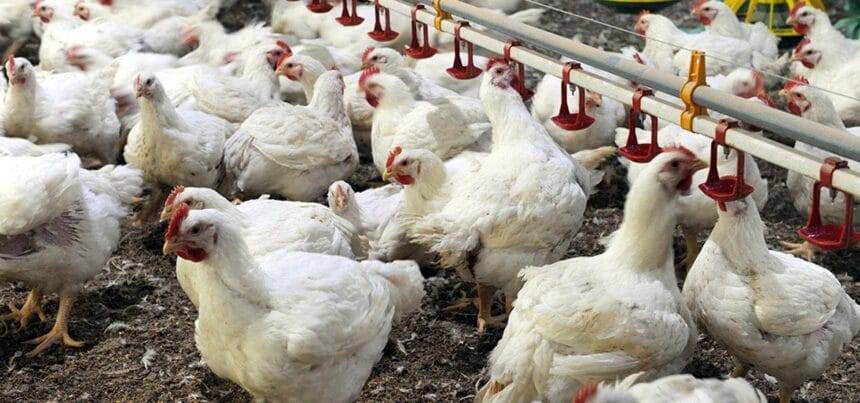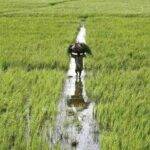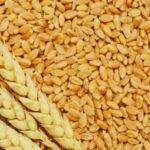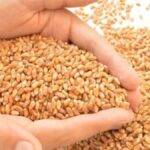Main Points In Hindi (मुख्य बातें – हिंदी में)
मुख्य बिंदु:
-
पोल्ट्री उद्योग की वृद्धि: भारत में मुर्गापालन ने उल्लेखनीय विकास देखा है, जिससे यह दुनिया का दूसरा सबसे बड़ा पोल्ट्री बाजार बन गया है। अंडे और पोल्ट्री मांस देश की खाद्य सुरक्षा और आर्थिक विकास में महत्वपूर्ण भूमिका निभाते हैं।
-
आर्थिक योगदान: मुर्गी पालन से जुड़े मांस और अंडों का उत्पादन तेजी से बढ़ रहा है, क्योंकि यह छोटे निवेश और उच्च रिटर्न प्रदान करता है। इसके कारण इसे विशेष रूप से ग्रामीण क्षेत्रों में रोजगार और उद्यमिता के अवसरों के लिए लाभदायक माना जाता है।
-
पोषण सुरक्षा: पोल्ट्री उत्पाद, जैसे अंडे और चिकन, कुपोषण को दूर करने में सहायक हैं, क्योंकि ये महत्वपूर्ण पोषक तत्व प्रदान करते हैं जो विशेष रूप से अल्पपोषित समुदायों के लिए अहम हैं।
-
चुनौतियाँ और विरोधाभास: हालांकि पोल्ट्री उद्योग का विकास एक सकारात्मक कहानी है, लेकिन इसे फीड लागत, रोगों, और सार्वजनिक भ्रांतियों जैसी चुनौतियों का सामना करना पड़ता है। ये समस्याएँ दीर्घकालिक स्थिरता को प्रभावित कर सकती हैं।
- सरकारी पहल: भारत सरकार पोल्ट्री उद्योग का समर्थन करने के लिए विभिन्न प्रोत्साहन कार्यक्रम शुरू कर रही है, साथ ही स्वास्थ्य लाभों को बढ़ावा देने के लिए सार्वजनिक शिक्षा अभियानों का संचालन कर रही है। यह समर्थन उद्योग को स्थिर बनाए रखने और घरेलू बाजार को मजबूत करने में मदद करेगा।
Main Points In English(मुख्य बातें – अंग्रेज़ी में)
Here are the main points from the text regarding the poultry industry in India:


-
Economic Growth and Contributions: India’s poultry sector is experiencing rapid growth, making it the world’s second-largest poultry market. The production of eggs and poultry meat is essential for the country’s food supply and contributes significantly to the economy, offering quick returns on investment and improving rural livelihoods.
-
Nutritional Impact: Poultry products, particularly eggs and chicken, play a crucial role in addressing malnutrition by providing essential nutrients like protein, vitamins, and minerals. This makes them vital for improving dietary standards, especially among undernourished populations.
-
Challenges Facing the Industry: Despite its success, the poultry industry faces challenges such as rising feed costs, seasonal disease outbreaks, public misconceptions about antibiotic use, and price fluctuations. These issues pose risks to the long-term sustainability and profitability of poultry farming.
-
Government Initiatives: The Indian government is taking steps to address the challenges faced by the poultry sector by implementing support programs, promoting research for disease prevention, improving feed efficiency, and launching public education campaigns to debunk myths about poultry products.
- Future Prospects: The future of the poultry industry in India appears promising, but its success will depend on overcoming current challenges through innovation, adaptability, and effective government support. By addressing both opportunities and challenges, the poultry sector has the potential to enhance food security and drive economic growth in the country.
Complete News In Hindi(पूरी खबर – हिंदी में)
डॉ. अनीश कौल, मोहम्मद इरफान
भारत, जो अपनी कृषि शक्ति के लिए जाना जाता है, एक विशेष क्षेत्र-मुर्गापालन में असाधारण वृद्धि देख रहा है। जो गतिविधि पिछवाड़े की गतिविधि के रूप में शुरू हुई थी वह एक उभरते हुए उद्योग में बदल गई है, जो देश की अर्थव्यवस्था और पोषण सुरक्षा में महत्वपूर्ण योगदान दे रही है। आज, भारत दुनिया के दूसरे सबसे बड़े पोल्ट्री बाजार के रूप में शुमार है, अंडे और पोल्ट्री मांस देश की खाद्य आपूर्ति श्रृंखला के लिए अपरिहार्य हैं। लेकिन केवल संख्याओं से परे, पोल्ट्री ग्रामीण आजीविका में सुधार, कुपोषण को दूर करने और उद्यमिता को बढ़ावा देने में गहरी भूमिका निभाती है।
आर्थिक योगदान: सिर्फ मांस और अंडे से कहीं अधिक
भारत में मुर्गी पालन का आर्थिक योगदान हाल के वर्षों में तेजी से बढ़ा है। ऐसे देश में जहां कृषि 50% आबादी को रोजगार प्रदान करती है, पोल्ट्री निवेश पर तेजी से रिटर्न प्रदान करती है, अक्सर कुछ ही महीनों के भीतर। हाल के आंकड़ों के अनुसार, अकेले अंडे का उत्पादन 8.5% की वार्षिक दर से बढ़ा है, जिससे भारत विश्व स्तर पर पोल्ट्री अंडे का तीसरा सबसे बड़ा उत्पादक बन गया है। पोल्ट्री मांस उत्पादन भी इसी का अनुसरण करता है, भारत दुनिया में सातवें सबसे बड़े पोल्ट्री मांस उत्पादक के रूप में अपना स्थान सुरक्षित कर रहा है।
इस तीव्र विस्तार के लिए कई कारक जिम्मेदार हो सकते हैं:
शहरीकरण और आय वृद्धि: जैसे-जैसे अधिक लोग शहरों की ओर जा रहे हैं और खर्च योग्य आय बढ़ रही है, चिकन और अंडे जैसे किफायती और पौष्टिक प्रोटीन स्रोतों की मांग बढ़ गई है।
रोजगार और उद्यमिता: मुर्गी पालन एक आकर्षक व्यवसाय अवसर प्रदान करता है, खासकर ग्रामीण क्षेत्रों में जहां बड़ी भूमि की आवश्यकता नहीं होती है। कम निवेश और प्रबंधनीय संचालन के साथ, यह छोटे पैमाने के किसानों और युवा उद्यमियों दोनों को आकर्षित करता है।
खाद्य सुरक्षा: पोल्ट्री उत्पाद कुपोषण को दूर करने में महत्वपूर्ण हैं। अंडे और चिकन प्रोटीन, विटामिन और खनिज जैसे महत्वपूर्ण पोषक तत्व प्रदान करते हैं, जो उन्हें विशेष रूप से अल्पपोषित आबादी के लिए आहार मानकों में सुधार करने के लिए अपरिहार्य बनाते हैं।
स्वास्थ्य, पोषण, और बदलती आहार संबंधी प्राथमिकताएँ
जैसे-जैसे स्वास्थ्यवर्धक और प्रोटीन युक्त आहार की ओर ध्यान केंद्रित हो रहा है, पोल्ट्री को तेजी से भारतीय प्लेटों पर मुख्य भोजन के रूप में देखा जा रहा है। अंडे, जिन्हें “प्रकृति का मल्टीविटामिन” कहा जाता है, विटामिन बी12, डी और प्रोटीन जैसे आवश्यक पोषक तत्वों से भरपूर होते हैं। पोल्ट्री मांस में वसा की मात्रा कम होती है और यह उच्च गुणवत्ता वाले प्रोटीन का उत्कृष्ट स्रोत है, जो इसे स्वास्थ्य के प्रति जागरूक व्यक्तियों के लिए पसंदीदा विकल्प बनाता है। ऐसी बहुमुखी प्रतिभा और स्वास्थ्य लाभों के साथ, इसमें कोई आश्चर्य की बात नहीं है कि पोल्ट्री भारतीय आहार में एक महत्वपूर्ण भूमिका निभाती है।
विकास के पीछे छिपी चुनौतियाँ
हालाँकि पोल्ट्री उद्योग का उदय एक सफलता की कहानी है, लेकिन इसमें संघर्ष भी शामिल है। पोल्ट्री किसानों को कई चुनौतियों का सामना करना पड़ता है, जिनका यदि समाधान नहीं किया गया, तो दीर्घकालिक स्थिरता में बाधा आ सकती है।
फ़ीड लागत: सबसे गंभीर मुद्दों में से एक पोल्ट्री फ़ीड की बढ़ती लागत है, जो मक्का और सोया जैसी प्रमुख सामग्रियों की बढ़ती कीमतों से प्रेरित है। इससे लाभप्रदता पर असर पड़ता है और किसानों को उचित लागत पर उत्पादन बनाए रखने के लिए नवीन समाधान खोजने के लिए मजबूर होना पड़ता है।
रोग का प्रकोप: मौसमी बीमारियाँ, जैसे एवियन इन्फ्लुएंजा, पोल्ट्री फार्मों के लिए लगातार खतरा पैदा करती हैं, जिसके परिणामस्वरूप अक्सर उच्च मृत्यु दर होती है। यद्यपि जैव सुरक्षा उपाय लागू हैं, फिर भी वे सभी क्षेत्रों में असंगत बने हुए हैं। यह छोटे किसानों के लिए एक महत्वपूर्ण जोखिम है जिनके पास कठोर रोग-रोकथाम प्रोटोकॉल को लागू करने के लिए संसाधनों की कमी है।
सार्वजनिक भ्रांतियाँ: पोल्ट्री उत्पादों की सुरक्षा का समर्थन करने वाले वैज्ञानिक प्रमाणों के बावजूद, पोल्ट्री फार्मिंग में एंटीबायोटिक के उपयोग के बारे में अफवाहें उपभोक्ताओं के बीच भय फैला रही हैं। एंटीबायोटिक अवशेषों के बारे में गलत धारणाओं ने जनता में अविश्वास पैदा कर दिया है, जिससे किसानों के लिए उपभोक्ता विश्वास बहाल करने में एक कठिन लड़ाई पैदा हो गई है।
मूल्य में उतार-चढ़ाव: पोल्ट्री बाजार की चक्रीय प्रकृति अप्रत्याशित मूल्य में उतार-चढ़ाव की ओर ले जाती है, जिससे किसानों के लिए दीर्घकालिक लाभप्रदता बनाए रखना मुश्किल हो जाता है। ये बाज़ार की गतिशीलता अक्सर बड़े, एकीकृत पोल्ट्री संचालन का पक्ष लेती है, जिससे छोटे किसान वित्तीय घाटे के प्रति संवेदनशील हो जाते हैं।
मुर्गीपालन में विरोधाभास
भारत के पोल्ट्री क्षेत्र की सफलता एक विरोधाभास प्रस्तुत करती है। एक ओर, इसे आर्थिक विकास और बेहतर पोषण के प्रमुख चालक के रूप में देखा जाता है। दूसरी ओर, यह जैव सुरक्षा, बढ़ती फ़ीड लागत और एंटीबायोटिक दवाओं पर सार्वजनिक स्वास्थ्य संबंधी चिंताओं के मुद्दों में फंस गया है। उद्योग की वृद्धि अपने साथ बढ़ी हुई ज़िम्मेदारी भी लाती है – यह सुनिश्चित करते हुए कि विस्तार पशु कल्याण या सार्वजनिक स्वास्थ्य की कीमत पर नहीं होता है। इन विरोधाभासों से निपटने के लिए नीति निर्माताओं, उद्योग हितधारकों और किसानों को समान रूप से सावधानीपूर्वक संतुलन की आवश्यकता होगी।
सरकारी पहल और आगे का रास्ता
पोल्ट्री उद्योग के सामने आने वाली चुनौतियों को पहचानते हुए, भारत सरकार ने इसके विकास को समर्थन देने के लिए कदम उठाना शुरू कर दिया है। विभिन्न प्रोत्साहन कार्यक्रमों का उद्देश्य मुर्गीपालन को बढ़ावा देना है, विशेषकर छोटे स्तर के किसानों के बीच। इसके अतिरिक्त, अनुसंधान संस्थानों को बेहतर रोग-रोकथाम उपाय विकसित करने और फ़ीड दक्षता में सुधार करने के लिए प्रोत्साहित किया जा रहा है।
मिथकों को दूर करने और पोल्ट्री उत्पादों के स्वास्थ्य लाभों को बढ़ावा देने के लिए सार्वजनिक शिक्षा अभियान भी महत्वपूर्ण हैं। सरकार गलत सूचनाओं को सही करने और उद्योग द्वारा खाद्य सुरक्षा मानकों के कड़ाई से पालन को उजागर करने के लिए काम कर रही है।
वैश्विक मंच पर भारतीय पोल्ट्री किसानों के लिए नए अवसर प्रदान करते हुए निर्यात को बढ़ावा देने के भी प्रयास किए जा रहे हैं। निर्यात पर यह ध्यान कीमतों को स्थिर करने और यह सुनिश्चित करने के लिए विशेष रूप से महत्वपूर्ण है कि घरेलू बाजार टिकाऊ बना रहे।
भारतीय पोल्ट्री के लिए एक उज्ज्वल भविष्य
भारत में मुर्गीपालन का भविष्य आशाजनक दिखता है, लेकिन चुनौतियाँ अभी भी बनी हुई हैं। उद्योग की निरंतर सफलता नवाचार, अनुकूलन और फ़ीड लागत, बीमारी के प्रकोप और सार्वजनिक धारणा की बाधाओं को दूर करने की क्षमता पर निर्भर करेगी। सही सरकारी समर्थन और उद्योग पहल के साथ, पोल्ट्री क्षेत्र न केवल अर्थव्यवस्था के लिए, बल्कि भारतीय आबादी के स्वास्थ्य और कल्याण के लिए भी विकास का प्रतीक बना रह सकता है।
अवसरों और चुनौतियों दोनों को संबोधित करके, भारत का पोल्ट्री उद्योग देश की खाद्य सुरक्षा और आर्थिक विकास में महत्वपूर्ण भूमिका निभाते हुए और भी अधिक ऊंचाइयों तक पहुंचने की क्षमता रखता है।
(लेखक एमवीएससी, पशु चिकित्सा फिजियोलॉजी, आईसीएआर-एनडीआरआई, करनाल, हरियाणा और छात्र बीवीएससी और एएच हैं)
Complete News In English(पूरी खबर – अंग्रेज़ी में)
Dr. Anish Kaul, Mohammad Irfan
India, known for its agricultural strength, is witnessing remarkable growth in poultry farming, a sector that started as a backyard activity and has transformed into a thriving industry contributing significantly to the economy and nutrition security of the country. Today, India is recognized as the second-largest poultry market in the world, with eggs and poultry meat being essential components of the food supply chain. Beyond the numbers, poultry plays a vital role in improving rural livelihoods, combating malnutrition, and fostering entrepreneurship.
Economic Contribution: Beyond Just Meat and Eggs
The economic impact of poultry farming in India has surged in recent years. In a country where agriculture employs 50% of the population, poultry provides rapid returns on investment, often within months. Recent data indicates that egg production has grown at an annual rate of 8.5%, making India the third-largest producer of poultry eggs globally. Poultry meat production follows suit, with India securing its position as the seventh-largest poultry meat producer in the world.
Several factors contribute to this rapid expansion:
Urbanization and Income Growth: As more people move to cities and disposable incomes rise, the demand for affordable and nutritious protein sources like chicken and eggs has increased.
Employment and Entrepreneurship: Poultry farming presents attractive business opportunities, particularly in rural areas where large land isn’t necessary. With low investment and manageable operations, it appeals to both small-scale farmers and young entrepreneurs.
Food Security: Poultry products are crucial in combating malnutrition. Eggs and chicken provide essential nutrients like protein, vitamins, and minerals, making them indispensable for improving dietary standards, particularly for malnourished populations.
Health, Nutrition, and Evolving Dietary Preferences
With a growing focus on healthier, protein-rich diets, poultry is increasingly seen as a staple in Indian meals. Eggs, often called “nature’s multivitamin,” are packed with vital nutrients like vitamin B12, D, and protein. Poultry meat is low in fat and an excellent source of high-quality protein, making it a preferred choice for health-conscious consumers. Given their versatility and health benefits, it’s no surprise that poultry holds a significant place in the Indian diet.
Challenges Behind the Growth
Despite the poultry industry’s success, it faces several struggles. Poultry farmers encounter many challenges that, if unaddressed, could hinder long-term sustainability.
Feed Costs: One of the most pressing issues is the rising cost of poultry feed, driven by increasing prices of key ingredients like corn and soy. This affects profitability and pushes farmers to seek innovative solutions to maintain production at reasonable costs.
Disease Outbreaks: Seasonal diseases, like avian influenza, consistently threaten poultry farms, often leading to high mortality rates. While biosecurity measures are in place, they remain inconsistent across regions. This poses a significant risk for small farmers who lack the resources to implement strict disease prevention protocols.
Public Misconceptions: Despite scientific evidence supporting the safety of poultry products, rumors regarding antibiotic use in poultry farming spread fear among consumers. Misconceptions about antibiotic residues have created distrust in the public, making it difficult for farmers to regain consumer confidence.
Price Volatility: The cyclical nature of the poultry market leads to unpredictable price fluctuations, making it challenging for farmers to maintain long-term profitability. These market dynamics often favor larger, integrated poultry operations, leaving small farmers vulnerable to financial losses.
The Paradox of Poultry Farming
The success of India’s poultry sector presents a paradox. On one hand, it is viewed as a key driver of economic growth and better nutrition. On the other hand, it is entangled in issues of biosecurity, rising feed costs, and public health concerns regarding antibiotic use. The industry’s growth also brings increased responsibility—ensuring that expansion does not come at the cost of animal welfare or public health. Addressing these contradictions will require careful balancing by policymakers, industry stakeholders, and farmers alike.
Government Initiatives and the Path Forward
Recognizing the challenges facing the poultry industry, the Indian government has begun taking steps to support its development. Various incentive programs aim to promote poultry farming, particularly among small-scale farmers. Additionally, research institutions are being encouraged to develop better disease prevention strategies and improve feed efficiency.
Public education campaigns to dispel myths and highlight the health benefits of poultry products are also crucial. The government is working to correct misinformation and emphasize the industry’s adherence to food safety standards.
Efforts to promote exports also aim to provide new opportunities for Indian poultry farmers on the global stage. This focus on exports is especially important to stabilize prices and ensure a sustainable domestic market.
A Bright Future for Indian Poultry
The future of poultry farming in India looks promising, but challenges remain. The ongoing success of the industry will depend on innovation, adaptation, and the ability to overcome obstacles related to feed costs, disease outbreaks, and public perception. With the right government support and industry initiatives, the poultry sector can remain a symbol of growth, not just for the economy but also for the health and well-being of the Indian population.
By addressing both opportunities and challenges, India’s poultry industry has the potential to reach new heights while playing a crucial role in the country’s food security and economic development.
(Author: M.V.Sc, Veterinary Physiology, ICAR-NDRI, Karnal, Haryana, and student B.V.Sc and A.H.)










